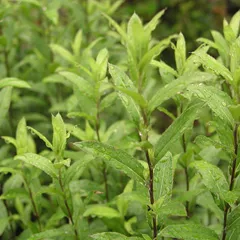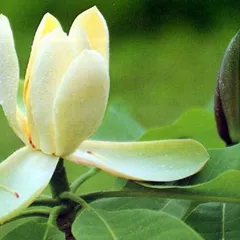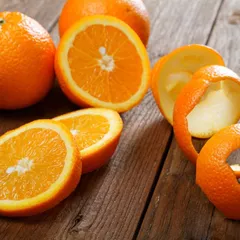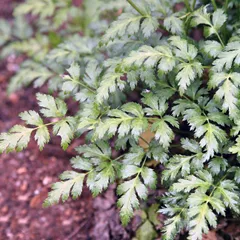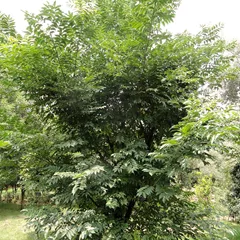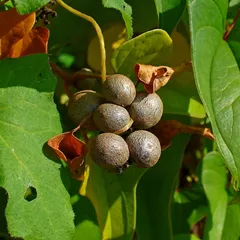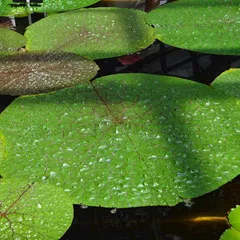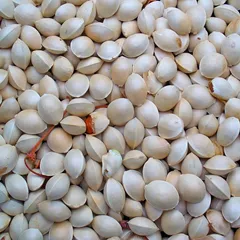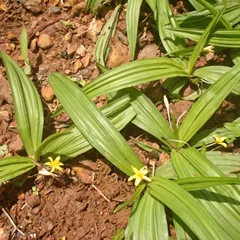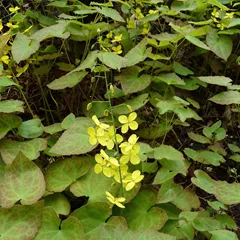Er Miao San
Er Miao San
Chinese: 二妙散
Pinyin: Èr Miào Sàn
Other names: Two Marvel Powder
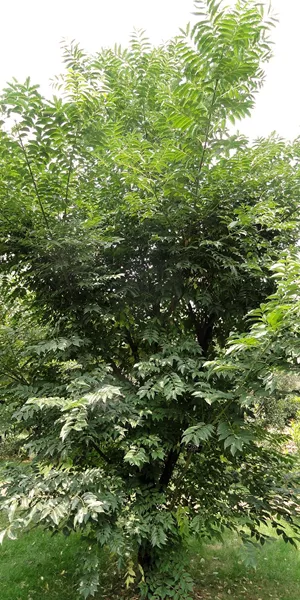
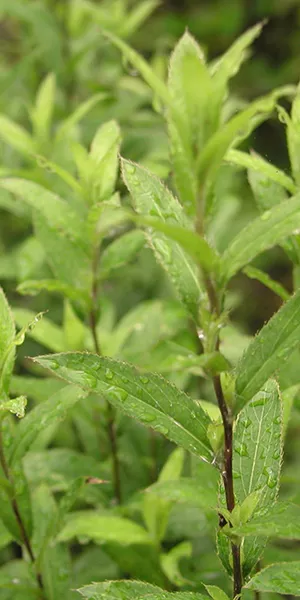
Er Miao San
Er Miao San
Chinese: 二妙散
Pinyin: Èr Miào Sàn
Other names: Two Marvel Powder
Number of ingredients: 2 herbs
Formula category: Formulas that expel Dampness
Conditions for which it may be prescribed: GoutVaginitisOsteoarthritis and two other conditions
- Expels Dampness from the Lower Burner
- Drains Heat from the Lower Burner
Contraindications: Contraindicated for Lung Heat or Liver and Kidney Deficiency unless some... Contraindicated for Lung Heat or Liver and Kidney Deficiency unless some modifications are made. see more
Source date: 1481 AD
Source book: Essential Teachings of [Zhu] Dan Xi
The information provided here is not a replacement for a doctor. You shouldn't use it for the purpose of self-diagnosing or self-medicating but rather so you can have a more informed discussion with a professional TCM practitioner.
Er Miao San is a 2-ingredient Chinese Medicine formula with Phellodendron Bark (Huang Bo) as a principal ingredient.
Invented in 1481 AD, it belongs to the category of formulas that expel Dampness. Its main actions are: 1) expels Dampness from the Lower Burner and 2) drains Heat from the Lower Burner.
In Chinese Medicine health conditions are thought to arise due to "disharmonies" in the body as a system. These disharmonies are called "patterns" and the very purpose of herbal formulas is to fight them in order to restore the body's harmony.
In this case Er Miao San is used by TCM practitioners to fight patterns like Damp-Heat or Damp-Heat in the Lower Burner. From a Western Medicine standpoint, such patterns can give rise to a range of conditions such as menstrual cramps, osteoarthritis or gout for instance.
On this page, after a detailed description of each of the two ingredients in Er Miao San, we review the patterns and conditions that Er Miao San helps treat.
The two ingredients in Er Miao San
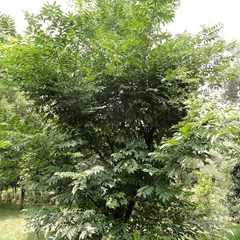
Huang Bo is a king ingredient in Er Miao San. Like the name indicates, it means it has more power than other ingredients in the formula.
1. Phellodendron Bark (Huang Bo)
Part used: Dried bark
Nature: Cold
Taste(s): Bitter
Meridian affinity: BladderKidneyLarge intestine
Category: Herbs that clear Heat and dry Dampness
Huang Bo directly enters into the Lower Burner to eliminate Heat and dry Dampness. The cooling nature of Phellodendron bark prevents the warmth of Black atractylodes rhizome from further aggravating pathogenic Heat, even as each herb supports the other in drying Dampness.
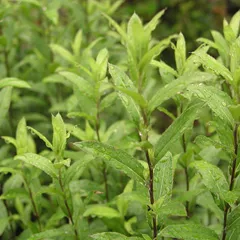
2. Black Atractylodes Rhizomes (Cang Zhu)
Part used: The dried rhizome
Nature: Warm
Meridian affinity: SpleenStomach
Category: Aromatic herbs that transform Dampness
Cang Zhu resolves Damp Heat from the Middle Burner such as the Spleen. Its acrid and warming nature supports the Spleen's transformation and transportation function. It also moderates the bitter, cooling, and downward-directing aspect of Phellodendron bark.
Conditions and patterns for which Er Miao San may be prescribed
It's important to remember that herbal formulas are meant to treat patterns, not "diseases" as understood in Western Medicine. According to Chinese Medicine patterns, which are disruptions to the body as a system, are the underlying root cause for diseases and conditions.
As such Er Miao San is used by TCM practitioners to treat two different patterns which we describe below.
But before we delve into these patterns here is an overview of the Western conditions they're commonly associated with:
Menstrual cramps Osteoarthritis Gout Spasm of the gastrocnemius muscle Vaginitis
Again it wouldn't be correct to say "Er Miao San treats menstrual cramps" for instance. Rather, Er Miao San is used to treat patterns that are sometimes the root cause behind menstrual cramps.
Now let's look at the two patterns commonly treated with Er Miao San.

'Heat' as a body pattern in Chinese Medicine is one of the so-called "Eight Principles". Learn more about Heat pattern in Chinese Medicine
Damp-Heat
Pulse type(s): Soggy (Ru)
Symptoms: Acne Fever Thirst Fatigue Hot body Headaches No thirst Dry mouth Dizziness Red urine Joint pain Heavy head Late period Restlessness Loose stools Heavy periods Poor appetite Chest pressure Feeling of heat Sore lower back Vaginal itching Aversion to cold Frequent sighing Vaginal discharge Abdominal fullness Frequent urination Swollen neck glands Abdominal tightness Sore and weak limbs Feeling of heaviness Lower abdominal pain Scanty dark urination Thick menstrual blood Scanty and dark urine Trichomonas infection Irregular menstruation Thermophilus infection Feeling of bearing down Purplish menstrual blood Smelly Vaginal discharge Sticky vaginal discharge Sticky taste in the mouth Bitter taste in the mouth Small clots in menstrual blood Yellow or brown vaginal discharge Stifling sensation in the chest and epigastrium
Er Miao San is sometimes prescribed by TCM practitioners to treat Damp-Heat. This pattern leads to symptoms such as fever, swollen neck glands, headaches and stifling sensation in the chest and epigastrium. Patients with Damp-Heat typically exhibit soggy (Ru) pulses.
Within the Four-Levels theory, Damp-Heat is the first level of invasion of External Pathogens, when it still resides in the body's Exterior.
The general symptoms of Damp-Heat are the heaviness of the body and head as well as low temperature fever rising in the afternoon. The patients are not hot on... read more about Damp-Heat

The Triple Burner is a so-called "Fu" Organ. Learn more about the Triple Burner in Chinese Medicine
Damp-Heat in the Lower Burner
Pulse type(s): Rapid (Shu), Slippery (Hua)
Tongue coating: Sticky coating
Symptoms: Dry mouth Dry throat Lower back pain Painful urination Urinary retention Red and swollen feet Lower abdominal pain Red and swollen knees Scanty and dark urine Scanty and yellow urine Sores on the lower extremities Weakness of the lower extremities Thick yellow smelly vaginal discharge
Er Miao San is sometimes prescribed by TCM practitioners to treat Damp-Heat in the Lower Burner. This pattern leads to symptoms such as scanty and yellow urine, lower back pain, weakness of the lower extremities and red and swollen feet. Patients with Damp-Heat in the Lower Burner typically exhibit rapid (Shu) or slippery (Hua) pulses as well as a tongue with sticky coating.
Formulas similar to Er Miao San
Ping Wei San is 25% similar to Er Miao San
Huang Lian Jie Du Tang is 25% similar to Er Miao San
Da Bu Yin Wan is 25% similar to Er Miao San
Huang Lian Jiao Du Tang is 25% similar to Er Miao San
Yi Huang Tang is 20% similar to Er Miao San
Er Xian Tang is 17% similar to Er Miao San

